Tim Sahay in Polycrisis:
Protests led by farmers have been roiling Europe for months. In Belgium, Germany, Romania, the Netherlands, Poland, and France, farmers—armed with grievances ranging from subsidized Ukrainian grain imports to the EU-Mercosur trade deal and falling prices—have been taking to the streets, blocking traffic, and pelting the European parliament with eggs.
In the European halls of power, right-wing parties are taking note. In the Netherlands, populist and conservative parties have protested the ammonia tax imposed on the nation’s livestock. In Italy, figures in the ruling hard-right League and Brothers of Italy coalition have denounced EU decarbonization policies as hurting both consumers and industries. In France, Marine Le Pen, who ran for president as the National Rally candidate in the last election, is fighting against diesel taxes and for greater energy subsidies. The crystallization of a robust anti-climate coalition in the European Parliament is a real possibility after elections in June.
The farmers’ protests are a powerful reminder that the challenge to achieve “net zero” isn’t simply a technical one, but a political one. Unable to form or mobilize coalitions with working and middle classes, parties of the left have been locked out of power in much of the continent. Meanwhile, fossil-fuel interests have mobilized cross-class coalitions for militarized adaptation.
The socioeconomic risks of rebellion are not lost on incumbent governments in the global North and South. In the energy crisis of 2022–2023, European governments chose to cut fuel taxes and subsidize citizens’ energy bills on an enormous scale. Southern governments, for their part, continue to resist IMF’s consistent policy advice that they should stop supporting their populations with fossil-fuel, food, and agricultural subsidies.
Why is it so hard to stitch together a cross-class coalition for climate policy?
More here.

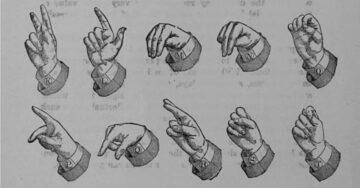 When I was editing my debut novel,
When I was editing my debut novel,  “Indelible in the hippocampus is the laughter.”
“Indelible in the hippocampus is the laughter.”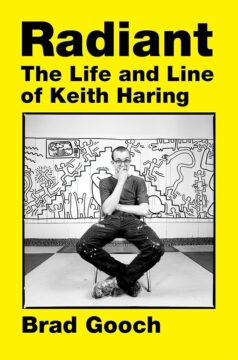 While modern audiences might be more likely to understand the import of these themes, many critics at the time discounted Haring’s work as “fast food,” as one put it, adding, “It’s a good time, it’s boogieing on a Saturday night, it’s alive, but great, no.” One curator blamed Haring’s commercial appeal for the reluctance to take his art seriously, saying, “I think Haring was so successful that other artists could not forgive him.” Gallerist Jeffrey Deitch pointed out that most artists enjoying Haring’s level of financial success would have been churning out even more sellable work. But Haring was committed to public projects such as murals, which he did for little or no compensation.
While modern audiences might be more likely to understand the import of these themes, many critics at the time discounted Haring’s work as “fast food,” as one put it, adding, “It’s a good time, it’s boogieing on a Saturday night, it’s alive, but great, no.” One curator blamed Haring’s commercial appeal for the reluctance to take his art seriously, saying, “I think Haring was so successful that other artists could not forgive him.” Gallerist Jeffrey Deitch pointed out that most artists enjoying Haring’s level of financial success would have been churning out even more sellable work. But Haring was committed to public projects such as murals, which he did for little or no compensation.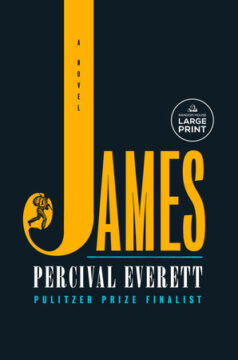 Everett mostly sticks to the broad outlines of Twain’s novel. He is riding the same currents; the book flows inexorably, like a river, yet its short chapters keep the movement swift. James is on the run, of course, because he has learned that Miss Watson plans to sell him to a man in New Orleans. He will be separated from his wife and children. Huck is on the run because he has faked his own death after being beaten by his father. They find each other on an island in the Mississippi, and their flight begins. The reader slowly discovers that their bonds run deeper than friendship.
Everett mostly sticks to the broad outlines of Twain’s novel. He is riding the same currents; the book flows inexorably, like a river, yet its short chapters keep the movement swift. James is on the run, of course, because he has learned that Miss Watson plans to sell him to a man in New Orleans. He will be separated from his wife and children. Huck is on the run because he has faked his own death after being beaten by his father. They find each other on an island in the Mississippi, and their flight begins. The reader slowly discovers that their bonds run deeper than friendship.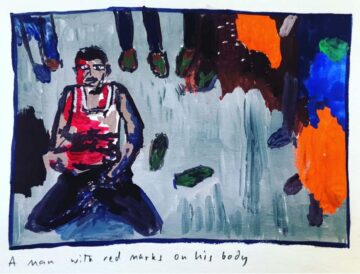 I was sitting on a train, travelling from my home in Poughkeepsie to New York City, when I saw a note on my phone asking me to write the piece below. I began thinking of a painting, a portrait of his father painted by the Indian artist Atul Dodiya, but the other memory that came to me was that I had long ago been sitting in the same Metro North train bound for New York City when the idea for my new novel,
I was sitting on a train, travelling from my home in Poughkeepsie to New York City, when I saw a note on my phone asking me to write the piece below. I began thinking of a painting, a portrait of his father painted by the Indian artist Atul Dodiya, but the other memory that came to me was that I had long ago been sitting in the same Metro North train bound for New York City when the idea for my new novel,  While Sutter loves science, he believes there are deep problems with the way science is actually done. He began to notice some of those problems before the Covid-19 pandemic, but it was Covid that brought many of them to the fore. “I was watching, in real time, the erosion of trust in science as an institution,” he said, “and the difficulty scientists had in communicating with the public about a very urgent, very important matter that we were learning about as we were speaking about it.”
While Sutter loves science, he believes there are deep problems with the way science is actually done. He began to notice some of those problems before the Covid-19 pandemic, but it was Covid that brought many of them to the fore. “I was watching, in real time, the erosion of trust in science as an institution,” he said, “and the difficulty scientists had in communicating with the public about a very urgent, very important matter that we were learning about as we were speaking about it.”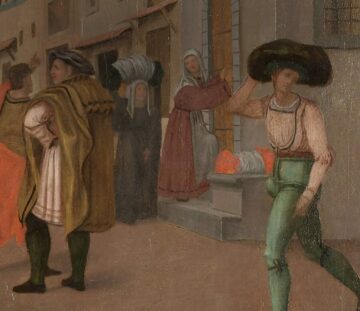 Friedrich Nietzsche once wrote: ‘Mankind likes to put questions of origins and beginnings out of its mind.’ With apologies to Nietzsche, the ‘questions of origins and beginnings’ are in fact more controversial and hotly debated. The ongoing Israel-Gaza war has reopened old debates over the circumstances of Israel’s founding and the origins of the Palestinian refugee crisis. Meanwhile, in a speech he gave on the eve of Russia’s invasion of Ukraine in February 2022, Vladimir Putin insisted that ‘since time immemorial’ Russia had always included Ukraine, a situation that was disrupted by the establishment of the Soviet Union. And in the US, The New York Times’
Friedrich Nietzsche once wrote: ‘Mankind likes to put questions of origins and beginnings out of its mind.’ With apologies to Nietzsche, the ‘questions of origins and beginnings’ are in fact more controversial and hotly debated. The ongoing Israel-Gaza war has reopened old debates over the circumstances of Israel’s founding and the origins of the Palestinian refugee crisis. Meanwhile, in a speech he gave on the eve of Russia’s invasion of Ukraine in February 2022, Vladimir Putin insisted that ‘since time immemorial’ Russia had always included Ukraine, a situation that was disrupted by the establishment of the Soviet Union. And in the US, The New York Times’  Last summer, as I sat waiting for a train in Penn Station, I noticed a figure approaching and trying to get my attention. Keenly aware that I was patronizing an ostensibly public space where the only seats were placed behind gates monitored by security guards, I was eager to part with a few dollars if asked. It took me a moment to register that the woman standing before me, wearing a blue habit and a crucifix around her neck, was asking to borrow my cell phone. She needed to call her elderly father, she said, to tell him that her train would be late, and that she would seek shelter for the night at a convent she had heard of in Boston before continuing her journey. Flooded with a sense of the auspicious, I asked her what her destination was. She said she was heading—as I somehow had felt she would be—to her father’s house on Cape Cod. She named the same town where my in-laws live, to which I, too, was traveling. My husband Jack was picking me up in Providence to drive there, I told her. Would she like a ride?
Last summer, as I sat waiting for a train in Penn Station, I noticed a figure approaching and trying to get my attention. Keenly aware that I was patronizing an ostensibly public space where the only seats were placed behind gates monitored by security guards, I was eager to part with a few dollars if asked. It took me a moment to register that the woman standing before me, wearing a blue habit and a crucifix around her neck, was asking to borrow my cell phone. She needed to call her elderly father, she said, to tell him that her train would be late, and that she would seek shelter for the night at a convent she had heard of in Boston before continuing her journey. Flooded with a sense of the auspicious, I asked her what her destination was. She said she was heading—as I somehow had felt she would be—to her father’s house on Cape Cod. She named the same town where my in-laws live, to which I, too, was traveling. My husband Jack was picking me up in Providence to drive there, I told her. Would she like a ride? AI continues to generate plenty of light and heat. The best models in text and images—now commanding subscriptions and being woven into consumer products—are competing for inches. OpenAI, Google, and Anthropic are all, more or less, neck and neck. It’s no surprise then that AI researchers are looking to push generative models into new territory. As AI requires prodigious amounts of data, one way to forecast where things are going next is to look at what data is widely available online, but still largely untapped. Video, of which there is plenty, is an obvious next step. Indeed, last month, OpenAI previewed
AI continues to generate plenty of light and heat. The best models in text and images—now commanding subscriptions and being woven into consumer products—are competing for inches. OpenAI, Google, and Anthropic are all, more or less, neck and neck. It’s no surprise then that AI researchers are looking to push generative models into new territory. As AI requires prodigious amounts of data, one way to forecast where things are going next is to look at what data is widely available online, but still largely untapped. Video, of which there is plenty, is an obvious next step. Indeed, last month, OpenAI previewed  Lacan collected works by the likes of Duchamp and Picasso, which he displayed proudly in his country home. But to be sure, the most iconic work of his collection, also on view, was Gustave Courbet’s L’Origine du Monde (1866); today, it is owned by the Musée d’Orsay. Famously, Lacan hid this detailed rendering of a vulva behind a sliding wooden door, onto which his friend (and eventual brother-in-law) André Masson painted his own Surrealist rendition. Masson added clouds that drift above an outline of L’Origine’s body, whose curves he recast as hills, her pubic hair resembling a bunch of flowers. L’Origine du Monde almost never leaves d’Orsay. But at the Pompidou-Metz, it no longer hangs alongside other 19th-century works, which often feel prudish in L’Origine’s presence. Instead, the curators have hung it beside more recent representations of vulvas—some of them direct retorts to the famous L’Origine—by the likes of Art & Language, Mircea Cantor, VALIE EXPORT, Victor Man, Betty Tompkins, and Agnès Thurnauer. Deborah de Robertis’s photograph hangs near L’Origine, showing a 2014 performance in which the artist, wearing a gold dress referring to the painting’s gilded frame, squatted in front of the work, spreading her legs wider than Courbet’s model topart her vagina, revealing what she calls “infinity,” or “the origin of the origin,” the depth that Courbet concealed.
Lacan collected works by the likes of Duchamp and Picasso, which he displayed proudly in his country home. But to be sure, the most iconic work of his collection, also on view, was Gustave Courbet’s L’Origine du Monde (1866); today, it is owned by the Musée d’Orsay. Famously, Lacan hid this detailed rendering of a vulva behind a sliding wooden door, onto which his friend (and eventual brother-in-law) André Masson painted his own Surrealist rendition. Masson added clouds that drift above an outline of L’Origine’s body, whose curves he recast as hills, her pubic hair resembling a bunch of flowers. L’Origine du Monde almost never leaves d’Orsay. But at the Pompidou-Metz, it no longer hangs alongside other 19th-century works, which often feel prudish in L’Origine’s presence. Instead, the curators have hung it beside more recent representations of vulvas—some of them direct retorts to the famous L’Origine—by the likes of Art & Language, Mircea Cantor, VALIE EXPORT, Victor Man, Betty Tompkins, and Agnès Thurnauer. Deborah de Robertis’s photograph hangs near L’Origine, showing a 2014 performance in which the artist, wearing a gold dress referring to the painting’s gilded frame, squatted in front of the work, spreading her legs wider than Courbet’s model topart her vagina, revealing what she calls “infinity,” or “the origin of the origin,” the depth that Courbet concealed. In these cases, climate science theory and observations are well aligned. Climate change has increased the frequency of
In these cases, climate science theory and observations are well aligned. Climate change has increased the frequency of 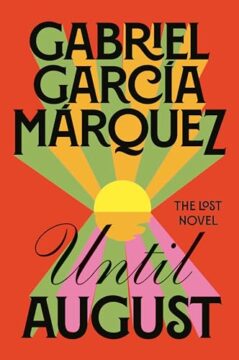 What is most jarring is that the story has all the hallmarks of García Márquez; despite its deficiencies, the writing is unmistakably his. At its center is Ana Magdalena Bach, who is a virgin when she marries and remains contentedly faithful to her husband until, at 46, she embarks on a series of explosive one-night stands, a new one each year. She meets the men, all of them strangers, during solo visits to the Caribbean island where her mother is buried. Without fail, every Aug. 16 she lays a bouquet of fresh gladioli on her mother’s grave, clears the weeds that have sprung up around the stone and quickly fills her mother in on the latest family news. Then she gets down to the serious business of finding a partner until morning, when a ferry will take her back to the mainland.
What is most jarring is that the story has all the hallmarks of García Márquez; despite its deficiencies, the writing is unmistakably his. At its center is Ana Magdalena Bach, who is a virgin when she marries and remains contentedly faithful to her husband until, at 46, she embarks on a series of explosive one-night stands, a new one each year. She meets the men, all of them strangers, during solo visits to the Caribbean island where her mother is buried. Without fail, every Aug. 16 she lays a bouquet of fresh gladioli on her mother’s grave, clears the weeds that have sprung up around the stone and quickly fills her mother in on the latest family news. Then she gets down to the serious business of finding a partner until morning, when a ferry will take her back to the mainland. Gabriel García Márquez died ten years ago this April, but people all over the world continue to be stunned, moved, seduced, and transformed by the beauty of his writing and the wildness of his imagination. He is the most translated Spanish-language author of this past century, and in many ways, rightly or wrongly, the made-up Macondo of One Hundred Years of Solitude has come to define the image of Latin America—especially for those of us from the Colombian Caribbean.
Gabriel García Márquez died ten years ago this April, but people all over the world continue to be stunned, moved, seduced, and transformed by the beauty of his writing and the wildness of his imagination. He is the most translated Spanish-language author of this past century, and in many ways, rightly or wrongly, the made-up Macondo of One Hundred Years of Solitude has come to define the image of Latin America—especially for those of us from the Colombian Caribbean.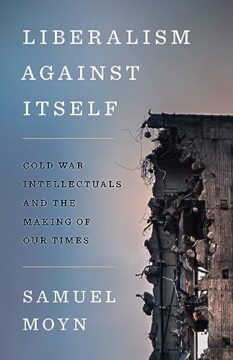 Hollywood rarely shops for film rights at academic presses. Yet if Samuel Moyn’s thought-provoking new book, Liberalism Against Itself, were adapted into a movie, I would recommend making it a courtroom drama.
Hollywood rarely shops for film rights at academic presses. Yet if Samuel Moyn’s thought-provoking new book, Liberalism Against Itself, were adapted into a movie, I would recommend making it a courtroom drama.